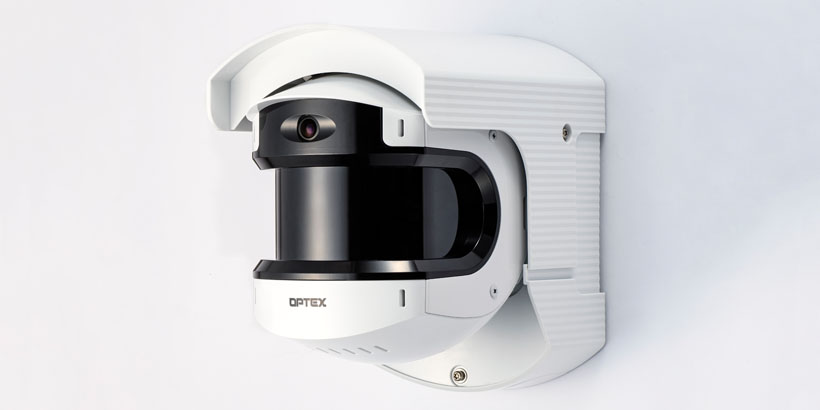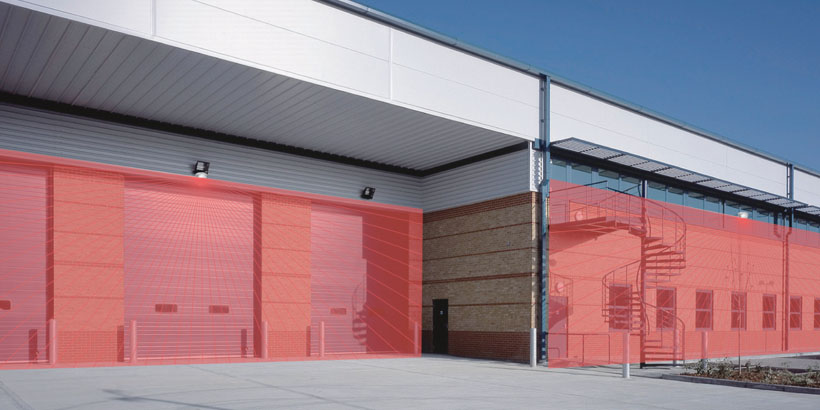When designing and implementing smart solutions, it is essential that credible triggers can be created to allow accurate and relevant actions to be generated. If detection devices do not have high levels of catch performance coupled with a good degree of resilience to nuisance activations, the system will inevitably struggle to deliver the performance users expect from their investment. While a stable and efficient system generates a good return on investment, a system which suffers with false positives or which misses events can quickly become an expensive mistake.
The first thing to ensure is the detection device has been specifically designed for use in high risk applications, and is offered by a manufacturer with a credible record in the intruder detection sector. While it is relatively easy to manufacture detection sensors, it is not a simple task to produce one which is both accurate and stable. More importantly, it is critical that detectors can be installed and configured with ease to ensure correct operation.
For example, some detection devices rely solely on walk-testing to ensure correct alignment. While the walk test is a key part of ensuring coverage is correct, it can be a repetitive task which takes time to get right. If not carried out properly, there is a chance that some activations will be missed. This is more relevant in longer range detection scenarios, as seemingly irrelevant misalignments close to the detector can be significant at the far end of the range.
Equally, setting up zones and masked areas – if possible within the detector – can be critical for accurate detection and alarm handling. Such flexibility, when properly configured, allows a more robust and beneficial detection solution to be implemented.
Often such advanced features are found in LiDAR detectors, but is not uncommon for many LiDAR devices to have been originally designed for industrial applications rather than security use. As such, when LiDAR sensors are deployed, it is critical the detectors have been designed for security applications, and have the right level of configurations to meet the demands of high-risk implementations.
Fit for purpose
OPTEX has optimised its LiDAR technology detection devices for security applications, and has included a number of features to ensure correct installation and configuration. The REDSCAN Pro range offers both accuracy and stability, along with flexibility when it comes to mounting the units, which can be configured for detection on both horizontal and vertical planes.
Setting up a REDSCAN Pro unit is carried out via a web browser. Once connected, a secure password needs to be set. The first task is alignment, and this is simplified as the REDSCAN Pro features an integral camera module. The view is marked with a red line which indicates the position of the detection field, allowing for a basic initial set-up. The LAC (Laser Area Checker) can then be used for fine tuning. The camera is also of use when troubleshooting the installation, as it allows the integrator or installer to verify what caused nuisance activations.
Once aligned, the detection mode is selected (indoor or outdoor) and the device performs an area scan, configuring itself. Final adjustments can then be made before moving on to configure the device settings.
The detector features a Home Map of the detection area, along with the ability to toggle between the map and camera view. There is also a pop-out window which gives real-time detector status, allowing integrators and installers to have an at-a-glance overview of the detector’s condition.
From the installer interface, the detection range can be set, as can detection areas. This is carried out via a simple point-and-click process using the Home Map. This allows a flexible approach to designating detection areas. It is possible to mask portions of the protected area or allocate them to zones for the implementation of differing actions dependent upon the location of an alarm.

Up to eight zones are supported, and detection criteria can be set globally or per zone. The sensor will either detect a motion object or object presence, and filters can be set for target minimum size, sensitivity, motion distance and tracking size. These options vary dependent upon the selected detection type. Further filtering can be set for auto area adjustment, alarm duration and boundary recognition. Trouble alarms include anti-masking, anti-rotation and soiling of the unit’s lens. A DQ output sends a notification if environmental conditions impact on the sensor’s performance.
Alarms in specific zones and different trouble alerts can be linked to different output terminals, ONVIF digital inputs or ONVIF motion alarms, allowing a variety of actions to be triggered based upon the alarm type.
The settings can be attached to a detection profile, two of which are supported. If the two profiles contain certain similarities, copying specific elements is a simple task, reducing the overall configuration time.
Alarms can be configured for transmissions using UDP, TCP or both. UDP transmissions can be broadcast or unicast. It is also possible to set ‘clear’ times for trouble signals, and heartbeat device monitoring Alarm transmissions can also be sent using ONVIF Profile S protocol (an SDK is provided by OPTEX)
To ensure the device is secure, installers can also set up encryption and high-level authentication to protect against unauthorised access to the device.
Advanced settings
It is possible to implement some advanced settings for the REDSCAN Pro. For example, inputs can be configured to take specific actions, such as switching the detection profile, setting an area or carrying out a diagnostic check on the detector itself. There is also an option to adjust the detector angle of view by up to five degrees.
A window heater (available as an optional extra) can be fitted to the sensor. By default, this will work in an automatic mode, unless the heater needs to be switched off.
Configurations for the integral assistance camera can be adjusted, with settings for contrast, brightness, sharpness and saturation. There is also a distortion correction mode to eliminate barrelling. Day and night modes can be set, as can WDR. Privacy masks can be added to the video image as well.
Video stream settings can be set for resolution (up to HD720p), bit rate, frame rate and GOP. Compression ratios can also be configured. Recording alarm times can be set for both pre- and post-alarm recordings. The event log allows searching of recorded footage. This allows visual verification of the causes of triggers and is invaluable for troubleshooting.
In terms of device security, the interface allows the addition and management of authorised users, along with ONVIF users who can view the video data. Levels are available for administrators, operators and users. The use of certificates is also supported to ensure high levels of protection against unauthorised access. The detector can use HTTP or HTTPS connectivity, and in the near future IEEE 802.1X can be implemented.
In summary
The REDSCAN Pro range of advanced LiDAR detectors offer a high degree of flexibility, and present a secure and accurate detection device. The configuration process is straightforward, allowing integrators and installers to add credible detection to any applications. OPTEX also has produced a series of simple videos to assist in the set-up and installation processes.
COMING SOON: An in-depth look at how the REDSCAN Pro devices can be implemented to solve security challenges.


